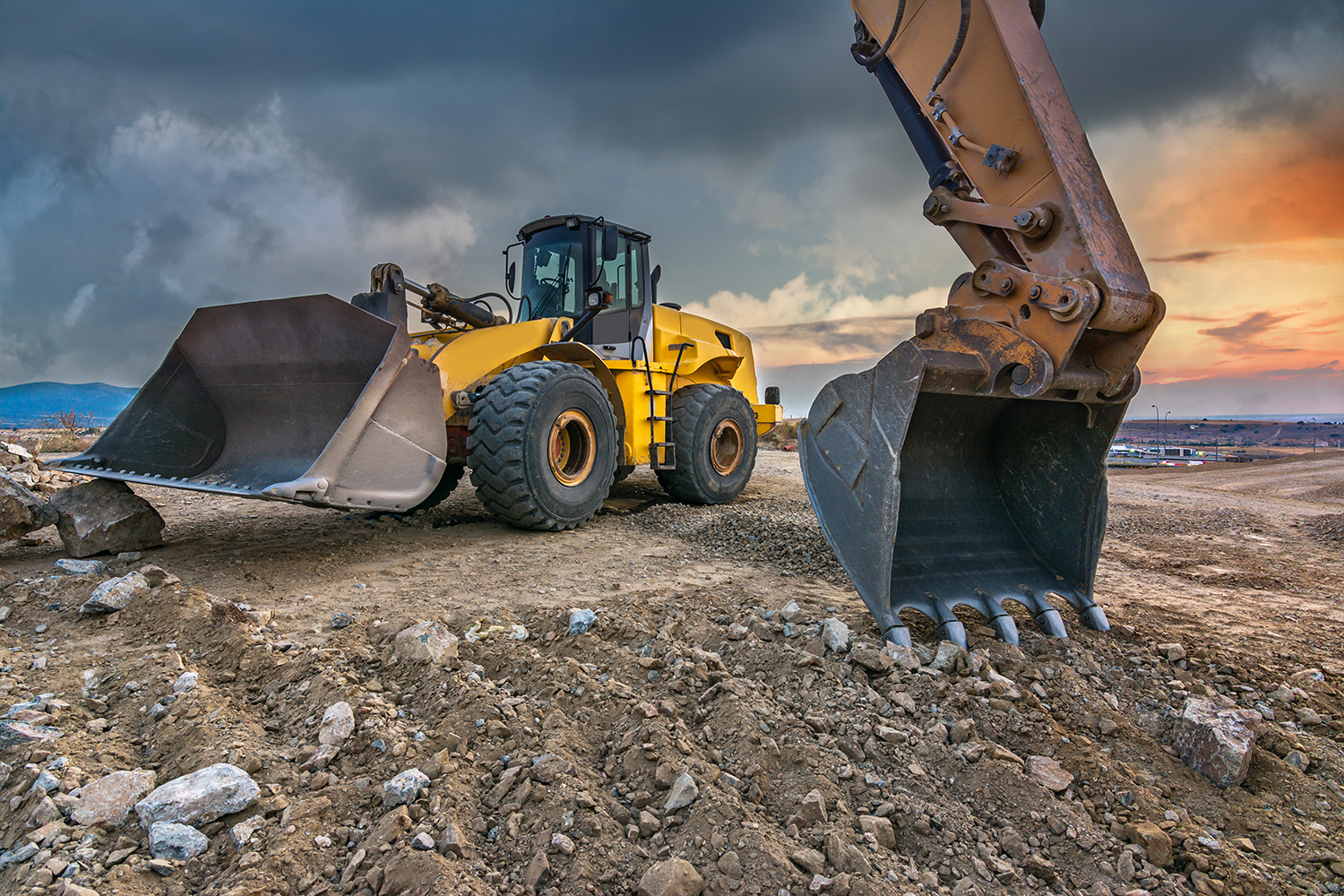
Ahead of World Environment Day, this CPD looks at challenges and strategies for soil reuse and management on construction projects. By Martin Ballard, group head of environment at Wates.
This year’s World Environment Day, which takes place on 5 June, looks at the themes of land restoration, desertification and drought resilience. There’s a clear link to sustainable soils reuse with mitigation to protect soil health, which is championed in the UK by the Society for the Environment (SocEnv). These challenges are relevant to all land management sectors in the built, managed and natural environments.
What you will learn in this CPD
- Why soil health is essential to biodiversity
- How to prevent soil loss
- Planning options for materials reuse
Soil health, structure and fertility relate to water and carbon storage, nutrients for plant growth, and micro and macro biota. The United Nations Convention to Combat Desertification says that healthy soil aids climate mitigation and, as an adaptation measure, resilience to drought and flooding.
As the ecological bedrock for habitats and biodiversity, soil health is essential to human health and wellbeing. What we see above ground reflects the soil’s health below ground and the biodiversity in the vicinity.
While attention to soils has historically had an inherent agricultural focus, the formation in 1948 of the British Society for Soil Science has contributed to greater attention to the relationship with planning and development in built and peri-urban environments.
In the UK, soils are overseen by environmental bodies such as the Environment Agency (EA) and Natural Resources Wales, with remediation and reuse promoted through the Town and Country Planning regime. In 1999, Contaminated Land: Applications in Real Environments (CL:AIRE) was formed to encourage the development sector to enable sustainable land and soil reuse.
The 2019 EA chair’s State of the Environment (Soil) statement clarified the importance of soil. In addition, an updated 2023 soils statement emphasises the principal risks to soil, including soil compaction, wind and storm runoff erosion, health degradation, and as yet unquantified impact from micro-plastics and other contaminants (including so-called ‘forever chemicals’ such as PFAS).
Implications for constructors
Whether masterplanning for developments, construction and residential on peri-urban land, urban construction or maintenance, the reuse of soils and stones is a fundamental pre-requisite for effective resource efficiency.
However, simply regarding the movement of soils and stones as ‘enabling works’ or, through late or poor planning, as a need to ‘muck away’, leads to significant environmental liabilities, costs and carbon implications.
The importance of soil management in planning and throughout the project lifecycle, before excavation contracts are let, is essential for success. Few of us in the built environment sector are soil scientists – we simply need to understand and manage the risk and engage with consulting experts early.
Here are some of the key challenges in soil management and reuse and how to address them.
1. Topsoil and its ecology
Healthy topsoil with its micro-biotic and invertebrate life may contain around one million bacteria in a single teaspoon. It will sustain habitat after projects have left site.
On a construction project, can the topsoil be left alive and uncompacted? If so, this will reduce the loss of nutrients and carbon from the soils, aiding in project carbon budgets and contributing to the site’s biodiversity net gain (BNG) potential.
2. Soil protection zones (SPZs)
Disrupting or compacting topsoil will stifle soil as a living organism. Sustaining soil ecology health by establishing SPZs will prevent the loss of greenhouse gases with soil biota decay. Besides, one cubic metre of healthy topsoil captures carbon at a rate of 12-35kg per year.
Temporary works, welfare cabins, materials storage areas and load-spread platforms could protect SPZs, especially where space is limited.
Planning for site logistics and traffic management to avoid topsoil compaction should be included in programme phasing.
3. Soil loss prevention
Soil can be lost from wind shear and silt runoff – an increasing problem resulting from climate change and weather extremes, plus a nuisance to local communities.
The impact of nutrient loss from topsoil and its impact on surrounding area habitat and watercourses can also harm the ecological health condition of the receiving plants and aquatic ecology through photosynthetic loss.
Topsoil must be managed and kept damp or seeded to prevent windblown loss (as well as dust nuisance). Subsoil must be managed to prevent runoff or wind shear loss of sediment.
4. Prior works stockpiles
There is usually a reason why site stockpiles are left on site. They may be difficult or hazardous waste, which will need investigation, testing and management. These could be complex to redress with regulators and CL:AIRE, given the inherent waste risk.
Soils and Stones Project
The SocEnv Soils and Stones project aims to expand good practice across sectors and influence decision-makers to implement soils and stones policies.
This includes sharing good practice on soils use and reuse, advocating for policies which recognise the value of these hugely valuable resources, and making connections and finding solutions through collaboration.
Any built environment professionals interested in joining can find more information on the SocEnv Soil and Stones Project page.
CIOB is a licenced member of SocEnv and is one the partners for the Soils and Stones project.
Remediation onsite may be possible through segregation, treating and discarding, or retesting and repurposing, if treatment standards can be met. This will require resources and involving competent persons to assure certainty of reuse and that conditions can be met to prevent harm to the environment, people or property.
Alternatively, relevant waste testing and disposal to a suitable permitted site will be needed. A Waste Acceptance Criteria (WAC) test will only be required if the waste is to be sent to a landfill site. The WAC test determines the leachate potential from the waste and allows the landfill site to accept or reject if the leachate is outside of its permitted allowances.
Stockpiled materials may be once-good topsoil. The upper layer may still be alive and healthy. However, unless the stockpile has been properly managed, the base of the stockpile may have decayed and additional greenhouse emissions created, such as carbon dioxide as well as the more impactful methane.
5. Breaking the ground
Principal contractors on construction projects need to be confident about having the necessary information to make the right soil management decisions – or that the designated person in their team has the required professional certificated competence and registration to manage the soils.
Every project will have a materials management plan (MMP), though it may be called something else.
Soil sampling and lab analysis will be required beyond the initial site investigation, which itself is unsuitable for material declaration or waste classification. This will require time and cost resources.
The U1 exemption allowance of 1,000t reuse of waste on a site is now time-limited with significant changes anticipated in March 2025 following persistent misuse of this soils reuse exemption. (For more information on this, see Section 5.1 of the government’s response to the exemption’s consultation and the detail with amends to uses and volume reduced to 500m3 in Annex 1.)
Poor planning and reliance on decisions after the ground has been broken lends itself to misuse, abuse and liabilities resulting from waste offences, knowingly or otherwise. Unacquaintance with or derogation of controls, whether considered as a material but still waste, leaves principal contractors with limited defence.
6. Planning for materials reuse (topsoil and subsoil)
Planning is essential if the project team intends to reuse materials. Otherwise, they will be rendered waste as dug material after a bucket breaks the ground. Akin to a snooker player declaring their colour choice after potting the red, the declaration of material is needed before action is taken, or penalty applies.
The CL:AIRE Definition of Waste: Code of Practice formalises the MMP with four steps to meet the rules for material reuse on or between sites. These require assurances to show certainty of re-use, soil analysis to prove suitability for use with no excessive deposits, and that the material poses no harm to health or the environment.
A competent soils consultant will be needed and an independent qualified person (QP) assigned. The QP’s duty is to act on the regulator’s behalf, to review and declare the soil as material, as well as to verify reuse as intended upon completion of works.
However, if a project has no MMP or has not made a declaration to CL:AIRE before a bucket goes into the ground, soil may be considered waste and not a reusable material, with its subsequent liability. Misuse of waste would attract regulatory intervention and potential for HMRC tax recovery (legitimate double jeopardy if also landfill tax has been avoided).
7. Stockpile with care
Mixing or blending excavated soil can render the material a waste. Stockpiles must be located on grounds that will be future hard standing, on ground that has been stripped of its topsoil and with a clear 2m segregation between the stockpile ‘toes’.
As noted in section 3 (soil loss prevention), topsoil must be managed to prevent windblown loss, and subsoil must be managed to prevent runoff or wind shear loss.
The Society for the Environment has just published its Soils and Stones: 2024 Progress Report
Martin Ballard CEnv CMgr FIEMA is group head of environment for Wates. He has led the SocEnv Soils and Stones Project since September 2019, including the publication of the SocEnv’s Soils and Stones Report in 2021.





